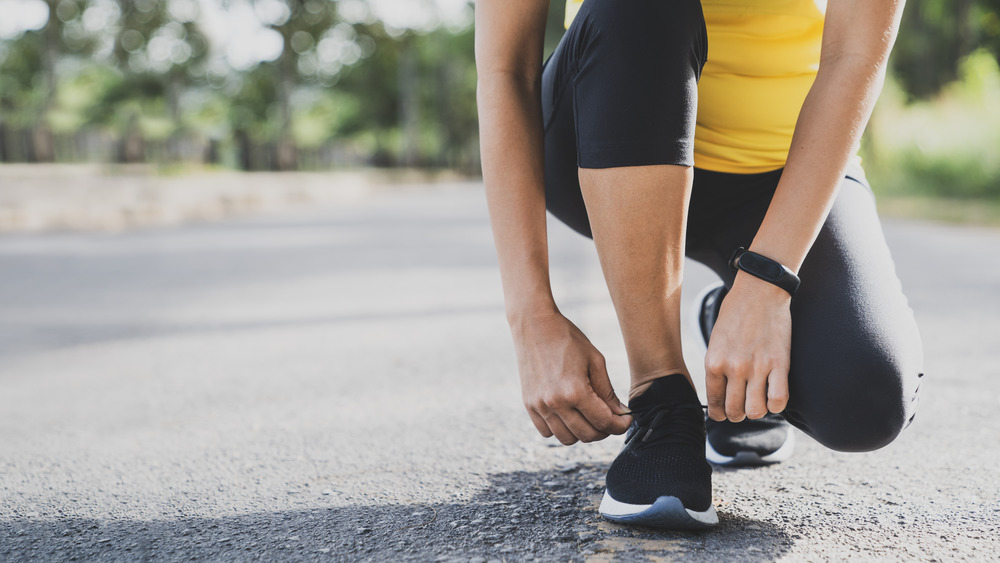Mistakes Everyone Makes When They Start Running
Even the healthiest of habits come with trial and error. When it comes to running, getting the right gear, strides, and times down can sometimes be daunting, but with time and practice, you can become a seasoned pro soon enough. When you're just getting started though, make sure to keep an eye out for a few pitfalls that could cause pain or injury.
For starters, make sure that your shoes fit you properly. To measure your running shoe size, make sure that you're measuring from your longest toe, not just from your big toe, PureWow notes. Since many people assume that their big toe is the longest, they sometimes get the wrong size shoe. Take a look at your second toe and make sure it isn't longer. Dr. Casey Ann Pidich tells the outlet, "Measure the sneaker size from the longest toe — your first or second toe. You should have a bit of wiggle room from your longest toe — and actually all your toes — when fitting a sneaker."
Wrong fitting may lead to discomfort when you run, often a discomfort you shouldn't be running through. "If one foot is painful and looks swollen, something is wrong," advises Dr. Pidich. "Stop running, and seek a professional, because you may have tendonitis or worse even — a stress fracture."
First-time runners often overdo it
Just like anything else, running for a long distance takes time to build up to. When you expect to run a marathon out of the gate, it's going to be incredibly tough on your body. VeryWell Fit warns against doing too much too soon, recommending only increasing your weekly mileage by 10 percent. If you're upping your distances faster than that, it's a recipe for soreness that can quickly turn into an injury. Your body needs time to adjust to your new routine.
On top of that, make sure to take rest days. Without proper time to rebound, your body can't build strength or continue to move at its highest capacity. This harmful effect can lead to bad form, such as upper body imbalance. VeryWell Fit suggests keeping your arms at a 90-degree angle with your arms swinging back and forth from the shoulder joint rather than your elbow during your run. Conserving energy and keeping your form in line, this arm position will help you run faster for longer.
Lastly, new runners often forget to break in new shoes, according to PureWow. When you get a fresh pair of sneakers, it's not time to log your longest run ever. New sneakers have to mold to your unique stride and foot makeup. Another tip from Dr. Pidich, "It's best to alternate between a worn pair and a slightly newer pair from the same brand while training, and use your regular broken-in sneakers for your race."

